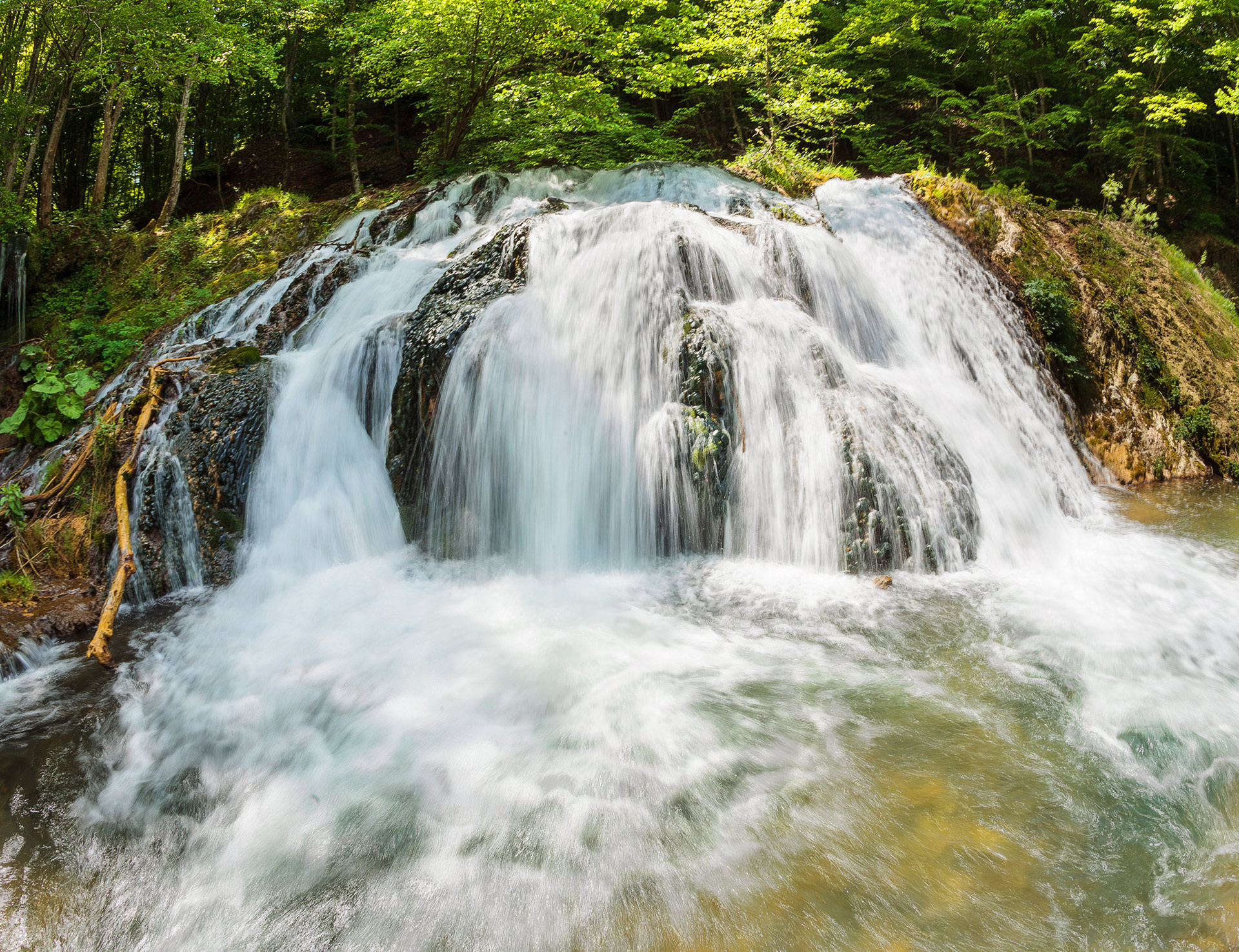
Geo-botanical zoning
The territory of the Strandja Nature Park occupies the most representative and typical area of the Euxeinos botanico-geographic province, which extends only along the Black Sea coast of Bulgaria and Turkey, within the European continent.
The Euxeinos botanico-geographic province is part of the European deciduous forest area. This area encompasses the majority of the territory of Bulgaria. The European deciduous forest area is characterized by moderate zone vegetation, whose indigenous vegetation is represented by broad-leaved, summer-green, and deciduous during the winter forests, mostly from European or European-Asian origin.
According to the geo-botanical zoning of Bulgaria, the predominant part of the territory of Strandja Nature Park belongs to the Strandja County – a separate area within the Euxeinos province – and its two regions: Veleka and Fakia.
Just like the coastal areas of the Euxeinos province, the Black Sea coastline of the Nature Park belongs to the Southern region of the West Coast Black Sea Region
Veleka Region of the Strandja Geo-botanical Region takes up 2/3 of the territory of the Park and “represents the most interesting “oasis” in Bulgaria, on the Balkan Peninsula and in Europe. Here, one can find the largest number of relict and south-euxeinos floral elements and south-euxeinos forest vegetation with edificators – the eastern beech-tree and the eastern durmast with the typical for them relicts: Quercus hartwissiana, Rhododendron ponticum, Vaccinium arctostaphylos, Daphne pontica, Ilex colchica, Epimedium pubigerum, Laurocerasus officinalis, Mespilus germanica, Hypericum calycinum, H. androsаemum, Trachystemon orientalis, Salvia forskaohlei, Sesleria alba, Erica arborea, Calluna vulgaris, Polygala supina, Teucrium lamifolium, Cicer montbretii, Veronica turrilliana and others.“ (prof. Ivan Bondev, Geography of Bulgaria, 2002).
Fakia Region of Strandja Geo-botanical Region occupies the north-western part of Strandja Nature Park, which geographically speaking can be pinpointed by the water catchment area of Mladezhka river (Karamluk). The region features mainly the xerothermal mixed forests of Quercus frainetto and Quercus cerris, but also Fagus orientalis forests and mixed forests of Fagus orientalis, Quercus frainetto and Quercus polycarpa. Most south-euxeinos relic floral elements are non-existent in this geo-botanical region. Only a small part of them participate in the formation of vegetation communities in the region, for example the Trachystemon orientalis, Salvia forskaholei, Mespilus germanica, and partly the Daphne pontica.
West Coast Black Sea Region, Southern Region
The Black Sea coastline of the Nature Park is part of the territory of the coast of the Euxeinos province, which due to its characteristics has been set up as autonomous region. The vegetation and the floral elements here are extremely varied as there are different micro- and mesonic climatic conditions, various edaphic conditions with typical for them ecological types of plants – psammophytes, halophytes, hazmophytes and different types in terms of the regime of humidity – xerophytes, mesophytes, hygrophytes. Besides the typical for the county euxeinos species, there are numerous steppe elements, and Mediterranean floral elements in the southern part. The more significant euxeinos floral elements present here are the relict Fagus orientalis, Quercus polycarpa and Fraxinus oxycarpa, but one can also see Scilla bithynica, Salvia forskahоlei, Trachystemon orientalis and Lathyrus aureus, as well as Sesleria alba alongside the Strandja coastline. The county is divided into two geo-botanical regions with Strandja coastline taking up the most representative area – that of the Southern Region.
The South Coastline Region covers a narrow strip of the Rezovska river up to the crest of the Emin Mountain. It features xerothermal Quercus pubescens forests and to a lesser degree Quercus cerris and Quercus frainetto forests with the presence of Ruscus aculeatus (sometimes on a large scale) among them. In the most southern parts there are Phyllirea latifolia, Paliurus spina-christi, often with the presence of Jasminum fruticans, Asparagus officinalis aculeatus and several southern grass elements.
The psammophytic vegetation is typical for the coastal sands, dominated by Ammophyla arenaria, Leymus racemosus, Centaurea arenaria, Jurinea albicaulis ssp. killea, Galilea micronata, Festuca vaginata, F. arenicola, Peucedanum arenarium and others. Characteristic for this area are aslo the campions – the euxeinos (Silene euxina) and the S. thymifolia, Pancratium maritimum), Otanthus maritimus, Cionura erecta), and others.
This region features dense forests with prevalent presence of Fraxinus oxycarpa and single participation of the Quercus hartwissiana, and an abundance of lianas and climbing plants.
